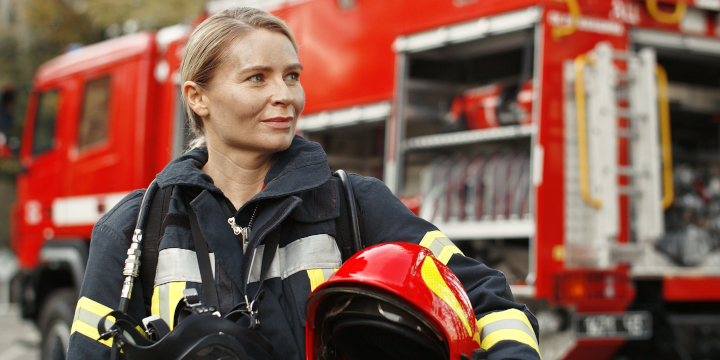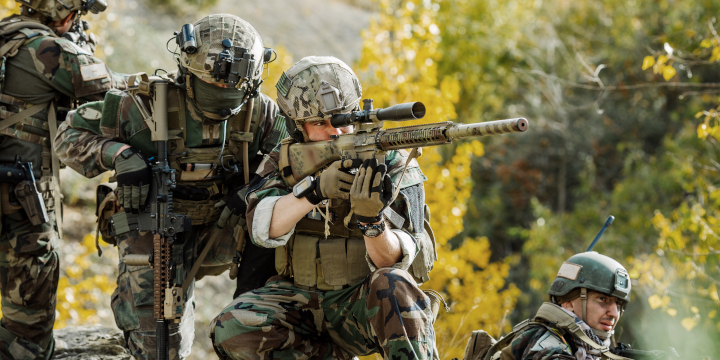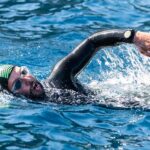Tactical athlete: injury prevention and functional recovery
Correct accident prevention arises from a deep knowledge of the biomechanical and physiological characteristics of the activity carried out, the type and incidence of accidents and from a correct application of the strategies identified.
Injuries that may occur inevitably affect the state of form and performance and can lead, over time, to significant health problems such as muscle stiffness and arthrosis.
Tactical athlete: who is?
An all-American term that indicates that particular category of people who find themselves carrying out jobs that require a great deal of physical effort, often in adverse environmental conditions.
Among them, for example, the Fire Brigade or the Special Maybe of the Army but also the professionals involved in rescues.
Tactical athlete who find themselves subjected to additional loads such as backpacks, weapons, fire extinguishers, etc. and high psycho-physical stress dictated by the situations in which they operate.
Very often, however, tactical athlete physical condition is not suitable for carrying out certain tasks and the percentages of a series of pathological and physical disorders they undergo are very high.
A targeted preventive approach and functional training programs for the prevention of problems are therefore essential for this category.

How to intervene on risk factors for a correct preventive approach
The variety of tactical tasks and the physical effort required, combined with the operations variable, inevitably predisposes the TA to the risk of injury and injury.
When an injury occurs, the tactical athlete tends to be predisposed to further possibilities of injury and, the only way to interrupt this circle, is to work both at the level of prevention and recovery aimed not only at the resolution of the problem itself but, above all, on the restoration of total functionality.

Musculoskeletal injuries are recognized by current scientific research as the largest health problem affecting military bodies
Suffice it to say that, for every 1,000 operators on duty monitored for a year, 628 reported a musculoskeletal injury (2).
Over 80% of injuries were classified as injuries due to the management of excessive mechanical stress or overload.
The knee appears to be the most affected anatomical site followed by the lumbar spine, ankle and foot.
Elements that demonstrate how important it is that the task of the physical trainer and physiotherapist in the TA field is oriented towards the prevention of such injuries in order to achieve a significant reduction.
Although many of these injuries are the inevitable consequence of harsh conditions and extreme movement requirements, optimizing the AT’s range of motion and work can reduce the risk of incurring these types of injuries. Having already suffered an injury is cited as a risk factor in incurring a new injury in the future (5, 6).
For this reason, the health staff and physical trainers of the tactical units should ensure that operators are screened for risk factors of possible injury, specific to their functions and for any past injuries that could compromise physical performance.
People considered at risk must be evaluated by expert doctors through in-depth analyzes aimed at finding the cause of the problem which, often, does not coincide with the finger of the lesion.
The inflammatory response
Faced with physical injury or trauma, the body’s first response is inflammatory to limit further damage and prepare for the healing process.
The classic signs of inflammation are redness, swelling, pain, warmth, and loss of function.
The acute inflammatory response lasts a couple of days while the signs of inflammation may persist for weeks due to various factors including the severity and location of the lesion, the effectiveness of initial therapeutic treatments and the individual response.
The goals of treatment during this phase are:
- minimize pain and swelling protect the injured site from further damage
- maintaining the resilience of movement and general physical conditioning
A useful acronym for the driving treatment, during the inflammatory phase, is PRICEM (Protection Rest Ice Compression Elevation Motion) ina variant that differs from the traditional RICE (Rest Ice Compression Elevation) for maintaining movement even in the acute phase respecting the parameters healing and insertion of the wound site protector.
Although clinicians and researchers recognize the paucity of quality evidence to support the use of RICE in sports medicine, this method is widespread and accepted with the caveat that physicians must evaluate the risks and benefits for each individual (7, 8).
Recovery phase: what to do
Recommendations for early recovery of movement after injury are increasingly supported by evidence of increasing quality from research (9,10).
Prescribed by the doctor or rehabilitation specialists, it promotes:
- optimal healing that avoids atrophy and loss of tissue extensibility
- quality and orientation of the fibers of the new fabric
Tactical athlete should commonly have basic information to apply PRICEM principles immediately after injury and specific knowledge of the excessive and unjustified use of non-steroidal anti-inflammatory drugs (NSAIDs).
Despite the lack of strong evidence to support their efficacy, in the short term (max 5 days) the use of NSAIDs is widely accepted and used when excessive inflammation causes symptoms related to pain and limitation of the ability to move after injury. (9).
However, using NSAIDs for chronic conditions and recent injuries without excessive inflammation likely carries more risks than benefits (9).
Side effects of NSAIDs are generally associated with their prolonged use and most commonly involve the gastrointestinal, cardiovascular and renal systems (9).
Their use inhibits bone healing (11) and, in the long term, is associated with harmful effects on cell growth and related metabolism (9).
For TAs concerned about the negative effects of NSAIDs on performance, occasional use is unlikely to negatively affect muscle growth and subsequent performance.
However, long-term use could limit muscle growth due to negative effects on satellite cell activity (12).
In the post muscle injury recovery phase, the quality of the final result largely depends on the quality of training during the remodeling phase. This healing phase corresponds to what is called the functional rehabilitation phase where the primary objective is to advance all training methods to a level commensurate with the physical needs of the tactical athlete.
During all phases of recovery from the injury it is important for the physical trainer to collaborate with the medical and rehabilitation staff in order to guarantee a physical form that is not excessively compromised.

Types of injuries
The following can occur:
- overload injuries
- injuries to the muscle, tendon and bone structures
Overload injuries occur when cumulative stress, which we refer to as “mechanical stress” applied to muscle, tendon and joint structures, exceeds the ability to adapt to stress which, usually within certain limits, is a physiological condition.
Overworked or repetitive and overuse conditions include tendinopathy, stress fractures, and patellar hamstring syndrome (13).
Such conditions frequently occur among tactical athletes, especially in the military, for whom running for physical conditioning is associated with excessive use of the lower limbs (14) and then often linked to overloading for carrying gear and equipment.
A contributing factor to excessive tissue mechanical stress associated with overload injuries is scheduling training sessions and movement dysfunctions (13).
Training planning errors occur when the volume or intensity of training sessions is excessive for the individual and due to the excessive frequency and duration of distance running (distance traveled more than three times a week or for more than 30 minutes (15).
Limiting the frequency and duration of distance running is advantageous for beginner runners to limit the incidence of possible injuries.
Injuries affecting the muscle tendon and bone structures, on the other hand, are the second category of overuse injuries and represent the inability of the bone to repetitively resist mechanical load with consequent structural fatigue and localized bone pain (18).
This type of injury occurs when the cumulative effects of weight-bearing activity and physical training exceed the individual’s ability to manage the mechanical stress on the bone system.
It is a process that begins with stress reactions that can progress and lead to stress fractures or fractures proper.
Untrained individuals are particularly vulnerable to this type of injury, particularly at the beginning of an inadequately structured training program.
The primary symptom of bone stress injuries is activity-related pain with a gradual onset (19)
The pain is initially mild and, unlike a mild tendinopathy, it does not subside with warming or continuing activity (20).
If this activity continues after the onset of symptoms, the disease will progress and the symptoms will become more severe and localized (20). At the beginning of the bone stress injury process the symptoms subside as the load ceases.
However, in the later stages, symptoms often manifest themselves even at rest.




Id like to thank you for the efforts you have put in penning this site. Im hoping to see the same high-grade blog posts by you in the future as well. In fact, your creative writing abilities has inspired me to get my own site now 😉
Good post. I learn something new and challenging on blogs I stumbleupon on a daily basis. Its always exciting to read content from other authors and use a little something from other web sites.